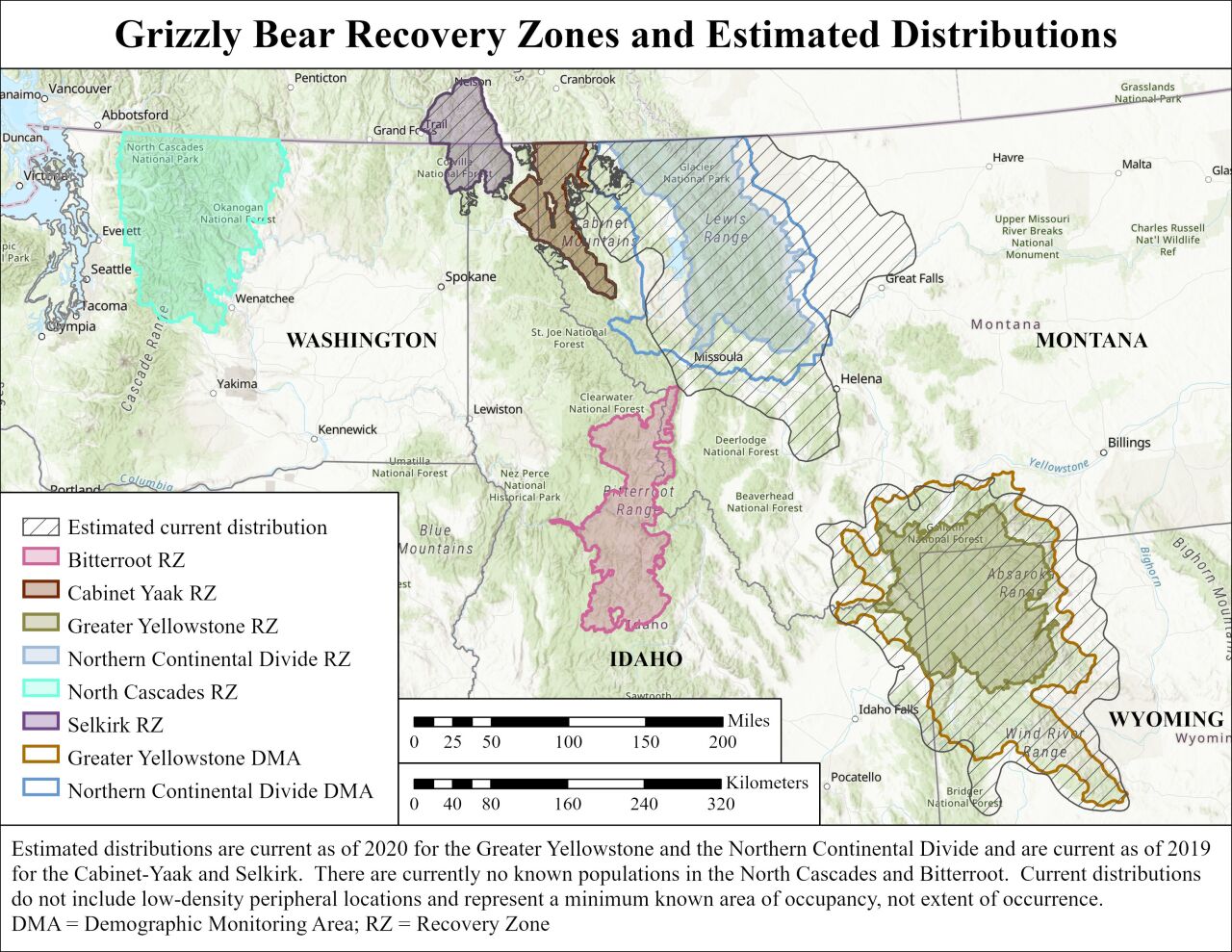Grizzlies are a hallmark of the West and they live in our region as a protected species.
Last week, the movement to delist the Grizzly from the Endangered Species Act (ESA) took a new step with Governor Little announcing his intent to sue the feds over the decision to maintain the bears' endangered status. But not everyone is on board with delisting at this time.
"Conservation groups tend to be pretty concerned with species being delisted if they're not quite ready yet," Bryan Hurlbutt, Advocates for the West staff attorney told Idaho News 6.
Hurlbutt said that Advocates for the West monitors environmental legal issues in the region; "Some of the cases we've worked on to protect different habitats from logging and other threats have involved grizzly bears."
Historically these bears were much more prevalent in America. Around a century ago, hunting and trapping nearly led the animal to extinction and in 1975 the grizzly bear was listed on the ESA.
"Grizzly bear populations in the lower 48 have declined from around 50,000 bears to just 1,000. The population range that they're inhabiting reduced to about one to two percent of what it once was," Hurlbutt explained, "it [the grizzly] has protection against what's called 'take' which is the harming, harassing, capturing, or killing of the species."
Critical habitat also has protection under the ESA and in 1993 a federal plan identified six recovery zones for the bears in Washington, Idaho, Montana and Wyoming.

Not all of the zones have seen a return in population distribution.
"We're an area that's been set aside for grizzly bear recovery but has yet to have an established known kind of presence of grizzly bears," Hurlbutt said.
The Northern Continental Divide and Greater Yellowstone Ecosystem zones in Montana and Wyoming have seen a comeback, but the zones on the Idaho side have not seen the same population success. The Bitterroot zone in central Idaho has no known established presence of the Grizzly at this time.
Conservationists like Jeff Abrams who is a wildlife program associate with Idaho Conservation League told Idaho News 6 that stakeholder conversations and policy development surrounding state management of grizzlies still need to happen, but the targets within Idaho have not been reached.
"Population targets have not been met for Selkirk, Cabinet Yaak populations or the Bitterroot," said Jeff Abrams, Idaho Conservation League wildlife program associate. "We're not set up right now, as a state, to inherit those responsibilities."
Despite this biological perspective, the majority of Idaho's lawmakers are in agreement and want the grizzlies delisted. Last week, the Governor issued a renewed notice to sue the feds over the issue, and Attorney General Labrador was quoted in a press release stating;
"Politicians in Washington continue to use outdated endangered species protections to encroach on state sovereignty. In their desire to stop Idahoans from hunting or managing our own destiny, they pretend Idaho cannot handle the management of species."
"We're most concerned about having the dialogue move from the place of being really sort of reactive and political into a place of what's biologically appropriate for the animals," Abrams said of the potential lawsuit.
"Those management strategies, in the form of these conservation strategies, need to be ironclad. They need to be constructed in such a way that assures genetic exchange, ensures healthy populations, and ensures that the way that they're actually managed on the ground is done so with adequate resourcing."
In February, the US Fish & Wildlife Service cited state petitions as a reason to re-evaluate delisting in the recovery zones within Montana and Wyoming. But the agency rejected Idaho's petition stating it lacked substantial evidence to delist grizzlies throughout the entire Lower 48 states.
Abrams said delisting from the ESA is always the goal once a species has recovered.
"In the case of the Yellowstone population and in case of Montana's population, in the North Continental Divide, we feel like if the animals support delisting we would endorse that idea because we want the Endangered Species Act to work," Abrams said.
During the 12-month evaluation period, comments and materials can be submitted to the US Fish & Wildlife Service. Click here to read their recent release.






